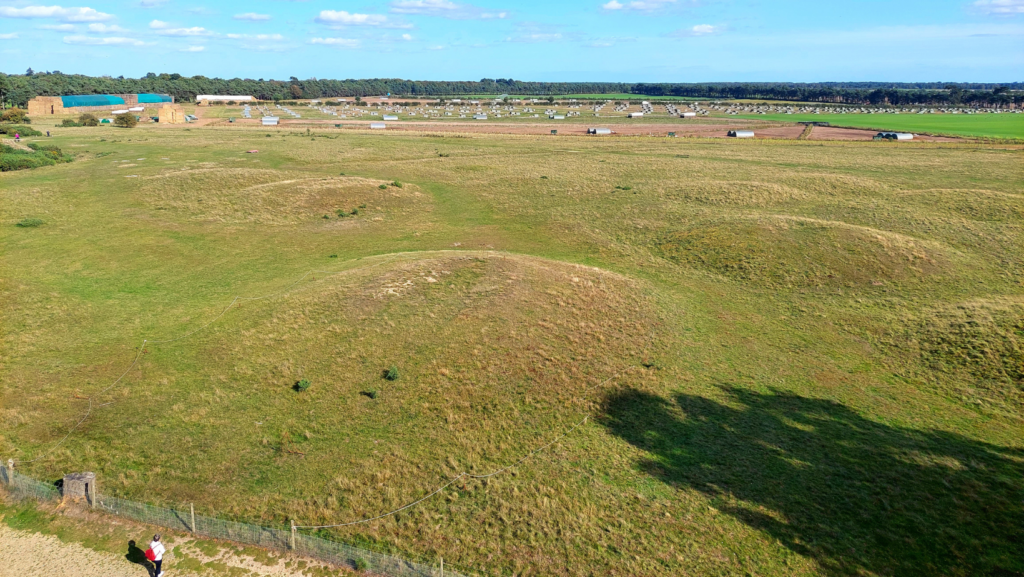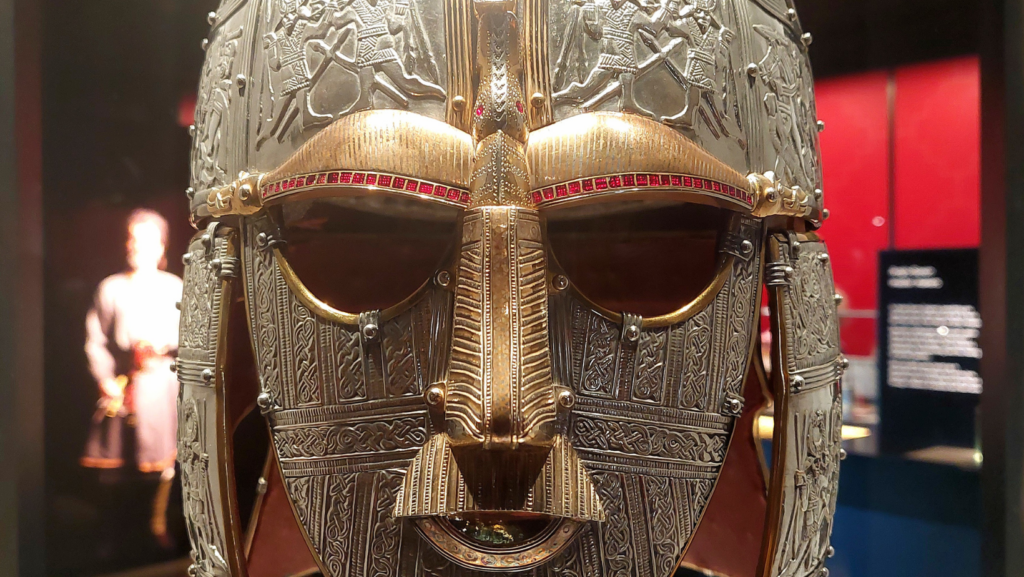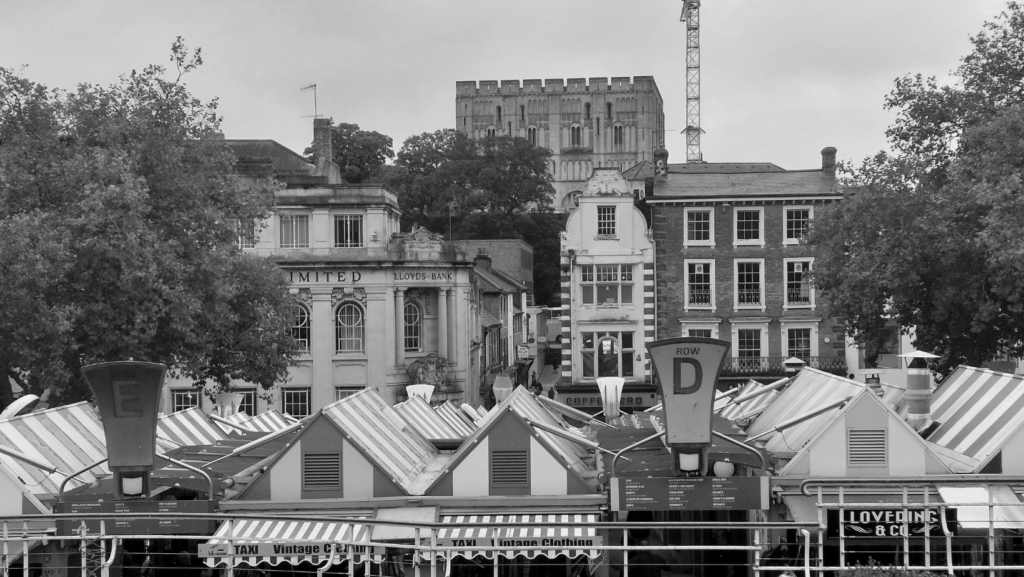East Anglia has always had close ties with royalty. From the Sandringham Estate, the current second home of the royal family, to other stately homes that have been used by royals throughout the centuries, through to visits by Kings and Queens such as Henry I and Elizabeth I and all the way back to when East Anglia was an independent kingdom with its own royal family! As well as being home to royals, East Anglia has also been an enemy to many of them, often standing up to the Crown in rebellions and it was not unheard of for a King to march an army into the region to put down some rebellion or other. Largely all the activity was due to our importance as a city, however, because as the second city of England, the Kingdom often relied on us economically and for our booming wool industry. With the King’s (Summer) birthday round the corner, we thought it would be appropriate to give you a brief overview of the sprawling history of our region’s connection to royalty.
The First Kings of East Anglia
The first royalty recorded coming to East Anglia would be a dynasty of Anglo Saxon Kings from Jutland called the Wuffingas. The Saxons came over to England as the Romans left, their mighty Empire crumbling as the Goths ransacked Rome. What was left were the Britons, who had just had their economy and imperial support removed with the withdrawal of Rome. Lush lands, full of nutrients good for crops, and natural resources such as flint and tin, drew the Saxons to the islands and they landed first, it is believed, in East Anglia. The origins of the Wuffingas line is unknown but hypothesised to be a line of ancient royal warriors that came here to establish their own kingdom and lineage. ‘Wuffingas’ as a name means ‘Wolf’s Kin’.

The first to take the throne is believed to be Wehha, although his son, Wuffa, holds the name that the clan later were named after. Thanks to an incredible archaeological discovery in the 1930s, one of the more well known of the Wuffingas is King Raedwald, possibly the grandson of Wuffa, whose incredible ship burial was discovered at Sutton Hoo, alongside the remarkable helmet that became synonymous with the Saxons. Sutton Hoo is now believed to be the burial site of a few, if not all of the East Anglian Kings and would have struck an impressive sight to travellers to nearby Rendlesham and Woodbridge. The great burial mounds visible from the rivers and roads all around would have been against the skyline from many angles and would remind the locals of the great royal lineage of the area.
Raedwald is believed to have been one of the first East Anglian Kings to start accepting the Christians and their god into their realm. In fact Raedwald himself possibly converted to Christianity and it is widely believed he had a temple both to Woden (the chief god of the Anglo Saxons) and one to the Christian god as well. Having said that, his burial is a classic pagan burial, with goods like pottery, jewellery, weapons and armour, and the bodies of hunting dogs buried with him so that he could take them with him into the next life. Also the burial underneath the hull of an upturned ship was a method used across pagan Germany and Scandinavia. Around the early 600sCE was a tumultuous time in terms of religion in England.

Another famous Anglo Saxon King is the later King Edmund. A Christian, Edmund is now known as St Edmund the Martyr to the Catholic church due to his violent death at the hands of The Great Heathen Army, an alliance of Scandinavian pagans who invaded England in 865CE under the sons of the semi historical Ragnar Lodbroke, a great Viking warrior with many tales of his life. The sons were Ivar The Boneless, Halfdan Ragnarsson and Ubba. The army was believed to land somewhere near modern day Lowestoft and pushed into East Anglia. Taken by surprise, King Edmund first pays the Northmen with gold and horses and allows them to winter in Thetford forest. In return, the army refrains from attacking East Anglian settlements and instead moves off to Northumbria in Spring, killing King Aella and capturing York.
The army moved back south a few years later, returning to Thetford, and this time King Edmund led an army against them, hoping to expel them from his lands. The East Angles were crushed in the ensuing battle and King Edmund was captured. The Northmen said they would show him mercy if he was to recant his Christian faith but Edmund refused, saying his god would protect him from harm. The Vikings responded by tying him to a tree, shooting him full of arrows and then cutting off his head which was thrown into Thetford Forest. Later, Saxons searching for the King’s body were, according to legend, led to the site of his head by a wolf who shouted “Hic, hic, hic” (“Here, here, here”) and then disappeared into the woods. Maybe this part of the story was a last salute to the origin of the family name, “Wolf’s Kin.” Supposedly, King Edmund’s head reattached to his body the moment the two touched together and his tomb became the source of a shrine and later monastery that became known as Bury St Edmunds. Sadly his body has never been discovered after being hidden during the Reformation in the 16th Century.
After the fall of King Edmund, East Anglia fell under control of the Danes and became part of the Danelaw, a large territory carved from East Anglia across the heart of England and it became home to settling Danes and Vikings. In 1002CE King Aethelred of Wessex orchestrated the St Brice’s Day Massacre, the slaughter of Vikings settled in English lands. We have found evidence in Oxford of executed Scandinavians and one prominent figure killed in the ensuing slaughter was Gunhilde, sister of the King of Denmark, Sweyn Forkbeard. Furious, Sweyn led an army to England and entered via East Anglia. In 1004CE, the settlements around the River Wensum, known as North Wic Ultra Aquam, (Later Norwich) were burned by the furious Sweyn and it’s believed to be at that point that the settlement moved across the river to the other side of Fye bridge. Once the Saxons regained control of the region from the Northmen, it became integrated into the Kingdom of England.
Norwich, the Seat of a Royal Palace
After the Norman conquest of England in 1066CE, following the Battle of Hastings, the Normans pushed into East Anglia the following year. They seized control of the region, an important trading hub with Europe at the time, constructed Norwich Castle and Cathedral and formed the new market place that still stands in the same place today in an area that became known as the French Quarter. Although initially a timber structure, Norwich Castle became a stone fortress in 1120CE. From this point until 1345CE, the castle served as a royal residence, meant for members of the royal family to live in and oversee the important region. Despite this, however, the castle is only known to have been used by the royal family on one occasion, during Christmas of 1121CE, the year after the completion of the stone keep, by King Henry I and Queen Adeliza, his new wife.

The visit came as part of a tour of the kingdom by the royal pair following the loss of Henry’s only legitimate son during the White Ship Disaster and after a period of absence on the King’s part who had been dealing with an uprising in Normandy. He wanted to reestablish his authority as King to the English people and show his presence to quiet any possible unrest. Little is known about the actual stay at the castle but we know that enormous amounts of preparation would have taken place for the many feasts and important figures that would be present. It is believed the King and Queen stayed for the 12 days of the holiday before moving off to another region. The King died soon after his visit and the lack of an heir threw England into a bitter civil war known as The Anarchy.
Around 1345CE, Norwich received a visit from King Edward III. It is believed he found the castle in a sorry state, and although the dungeons were being kept by the Sheriff and Bailiff of Norwich, the rest of the complex of buildings and the keep were falling into disrepair. What’s more, the ditches around the castle motte were becoming filled with refuse and sewage, having been practically abandoned by the Royals, the castle ditches had become fair game as a place of disposal. This is potentially one of the reasons why the King decided in that year to give full control of the castle over to the prison to be run by the Sheriff and Bailiff and the ditches were gifted to the people of Norwich to use the land for construction. From that moment on, the castle would remain a prison until the 1880s and the ditches, after nearly 80 years of being cleaned out and stabilised, became used by the people to build streets, the remains of one which we do our Hidden Street Tours of today!
Queen Elizabeth I Visits Norwich in 1578
On the 16th August, 1578, Queen Elizabeth I made her way from Bracon Ash to Norwich as part of her “Royal Progress” across the country. This tour was prompted by Catholic uprisings in England which Elizabeth, following in the religious footsteps of her father, King Henry VIII, was working on putting down. Norwich and East Anglia in general had some very stubborn pockets of Catholics thanks to the sympathetic leanings of the Bishop of Norwich and it is strongly believed that at least part of the reason for her visit was to remind the Bishop of his responsibilities to the Church of England in squeezing out the Catholics. The other reason for her visit was to meet the city’s “Strangers.” Otherwise known as Huguenots and Walloons, they were groups of Protestant refugees who had escaped persecution by the Catholic Spanish Empire and had fled Holland, France and Belgium to England. As master weavers, they had been mostly sent to East Anglia where England’s weaving trade was based.
Having personally visited the Spanish Netherlands, Queen Elizabeth had had a large number of weavers sent over to England herself. They were protected by the Crown and, although the response of local English people to their new neighbours had its problems, for the most part, they were treated well. During her visit, a pageant was put on on St Stephen’s Street with a 40 foot long stage. On it were weavers making cloth on their looms, displaying garments and fabrics and men adorned in all manner of fashionable clothing for the time, modelling the work. The Queen apparently was delighted with the display and spent some time talking to the weavers, examining the looms and the produce and asking questions about how each was achieved and with which tool. It would make sense that it was an important stop for her on her tour of Norwich as she had been so personally involved in their emigration to Norwich from the low countries.

During her visit, gentlemen of the city rode out to meet the Queen adorned in all sorts of finery. Buildings along her route were decorated and, in some areas, such as with the St John Maddermarket church, buildings were partially demolished to widen the road for the royal procession. Musicians were placed in strategic areas to regale the Queen with music as she moved through the city and short dramatic performances were put on, at each the Queen watched politely and congratulated and thanked those that performed. Robert Wood, then Mayor, had attempted to put on a performance about the mythical King, King Gurgunt, who, before our knowledge of Norwich’s history, was deemed its founder but likely never existed.
Unfortunately for Wood, a heavy rain suddenly came down over the city and the Queen was rushed to her accommodation in the Bishop’s Palace. Robert was later called to the Queen so the performance could go ahead and he was knighted for his troubles!
Sandringham: The Royal Estate in Norfolk
Of all the royal connections to Norfolk, the one that tends to come to mind is the royal estate of Sandringham which is often occupied by the monarch or royal family members. The current King, Charles III is the 5th generation of royals to occupy the home. The beautiful house and gardens are open to the public but act as the private country estate to the monarchy. The grounds today include a sawmill, an organic farm, commercial and residential properties, its own parish and community. It has been in the possession of the royal family since Queen Victoria.

The land and estate appear in the Domesday book in 1086 as Sant Dersingham, (‘or sandy Dersingham due to the sandbanks in the area, this is then shortened to Sandringham as time went on.) There has been a residence there since at least 1296 but when the royal family came to look at the estate in 1862, the house standing there was late 18th Century. The house was to be bought for Albert Edward, (later King Edward VII,) by his mother and father, Queen Victoria and Prince Albert, just after his 21st birthday, but his father Albert died just before. The purchase was delayed but carried on after a period of mourning.
At the time of purchase, the estate was in a poor state. Described by a tenant farmer that arrived there earlier in the year as “a place of dirt, ruin and destitution, with the labourers living in nothing more than hovels”, it would seem like a poor choice as a place for a Prince. Although expectations of the time were that the Prince would spend his money on living a life of leisure with his new wife, Princess Alexandra, he directed a large portion of his wealth to the restoration of the estate. This was a time long before the welfare of tenants was taken into consideration by landlords and was unusual behaviour for a royal. Under his ownership, new housing was built for the estate residents and workers and by the 1880s, Albert had installed social clubs in the surrounding villages to act as areas of recreation for the labourers living there. At the opening ceremony of the first, the Prince was recorded as saying, “I hope now that all those who are labouring on the Estate are comfortably housed” and that “I have long felt that….there was a great want, a room or rooms where, after your day’s work, you might meet for the purpose of recreation and instruction”.
Each social club was built with a “quiet room” filled with books so that those who could read and write could teach others, bringing adult education to the estate long before it became the norm in the country. A health centre was also built to help with the well-being of the working people in the area and in 1892 he advocated for the end of workhouses and poor laws and for the creation of a pension system for workers over 70. During his short reign as King, Albert Edward also implemented the Old Aged Pension Act in 1909.
Today, Sandringham remains the country estate to the reigning royal family and is often stayed in during the Summer. It stands in a beautiful part of the Norfolk countryside and is well worth a visit if you get the chance!
Sources
Topographical History of Norfolk
Frances Blomefield on Queen Elizabeth’s Visit